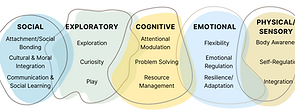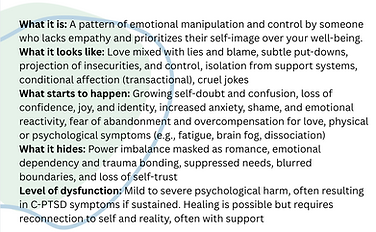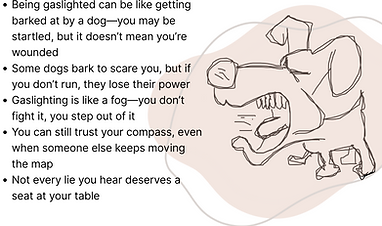top of page
Illustrations from How Deep Is the Wound?
Since illustrations are not visible when listening to the audiobook, I've included a comprehensive list of all images referenced in the text. Whenever an illustration appears, the narrator announces it by saying "Illustration" followed by the specific image name. This page provides a complete reference to help you visualize the accompanying artwork.
Chapter One

1.1 Brain vs Mind

1.2 Mental Space

1.3 Main Functions of Emotional System

1.4 Adaptive Capabilities

1.5 Optical Ilusion

1.6 A Wound, a Scar, and Active Injury

1.7 Sympathetic Levels of Activation

1.8 Parasympathetic Levels of Activation

1.9 Regulated vs Dysregulated Activation

1.10 Mentally Healthy Characteristics

1.11 The Dual Nature of Vulnerability

1.12 The Four Noble Truths of Suffering and Healing
Chapter Two

2.1 Body Sensations Table

2.2 Reactivity Scale Table

2.3 Emotional System Elements

2.4 Survival and Adaptive Emotions

2.5 Constructing our Emotions

2.6 Emotion Built on a Distorted Script

2.7 Emotional Wound Scale

2.8 Sensations Felt in the Body
Chapter Three

3.1 Emotional Pain Spectrum

3.3 Traumatization or Resolution
3.2 Progression to Survival Mode


3.4 Internal Traumatizing Agents

3.5 Scarcity vs Abundance Model

3.6 Most Important Emotional Needs

3.7 Homeostasis vs Allostasis

3.8 Defeatist Mentality

3.9 Victim Mentality Continuum

3.10 Sensations Felt in the Body

3.11 From Broken to Functional
Chapter Four

4.1 Unresolved vs Resolved Emotional Wounds

4.2 Most Significant Heartbreaking Circumstances

4.3 What Makes Us Insecure

4.4 Internalized Anger and Negativity

4.5 Strong Self vs Hollow-Self

4.6 Neglect Outcomes

4.7 The Circle of Belonging

4.8 Emotional First-aid Kit COMPASS
Chapter Five

5.1 Abuse

5.2 The Spectrum of Responses to Abuse

5.3 Narcissistic Abuse

5.4 Resilience in the Face of Manipulation

5.5 Gaslighting vs Pseudo-Gaslighting

Trauma Bond and Its Dissolution
Chapter Six

6.1 Traumatization Progression
6.3 Brain Energy Budget Allocation on Survival Mode


6.2 Internal and External Sources of Safety

6.4 Pre-programmed Responses to Threat

6.5 Brain Processing Systems

6.6 Dissociation

6.7 Emotional Tolerance Gauge
bottom of page